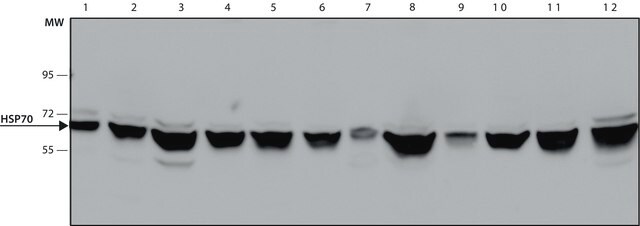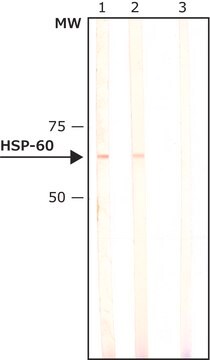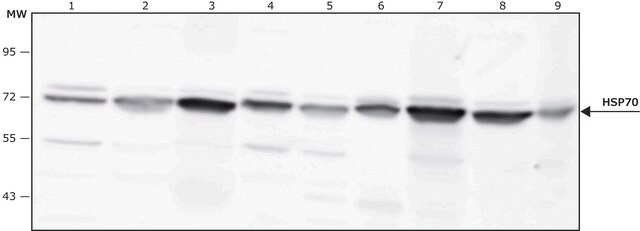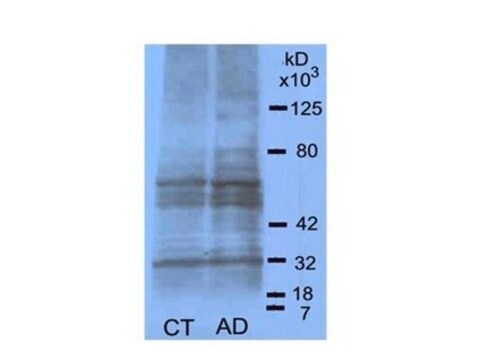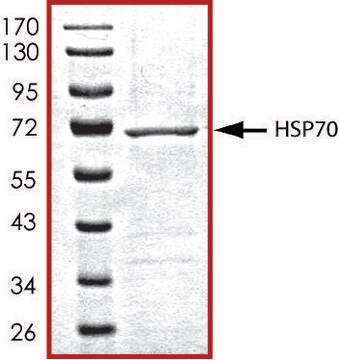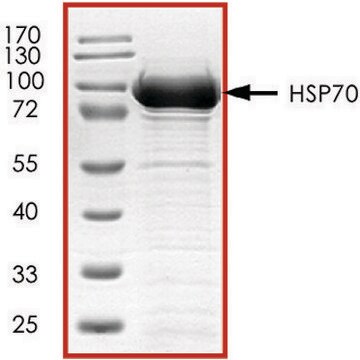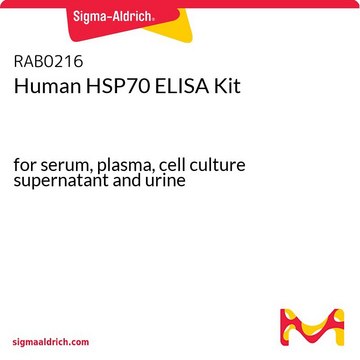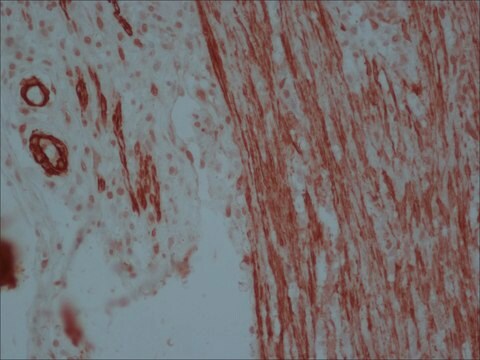H5147
Monoclonal Anti-Heat Shock Protein 70 antibody produced in mouse
clone BRM-22, ascites fluid
Sinonimo/i:
HSP70 Antibody - Monoclonal Anti-Heat Shock Protein 70 antibody produced in mouse, Hsp70 Antibody
About This Item
Prodotti consigliati
Origine biologica
mouse
Livello qualitativo
Coniugato
unconjugated
Forma dell’anticorpo
ascites fluid
Tipo di anticorpo
primary antibodies
Clone
BRM-22, monoclonal
PM
antigen 70 kDa
Reattività contro le specie
bovine, chicken, guinea pig, plant, Drosophila, rat, human, nematode, rabbit, hamster
tecniche
electron microscopy: suitable
immunohistochemistry (frozen sections): suitable
indirect ELISA: suitable
microarray: suitable
western blot: 1:5,000 using bovine brain extract
Isotipo
IgG1
N° accesso UniProt
Condizioni di spedizione
dry ice
Temperatura di conservazione
−20°C
modifica post-traduzionali bersaglio
unmodified
Informazioni sul gene
human ... HSPA1A(3303) , HSPA1B(3304)
rat ... Hspa1a(24472) , Hspa1b(294254)
Descrizione generale
Specificità
Immunogeno
Applicazioni
Immunoprecipitation (1 paper)
Western Blotting (4 papers)
- enzyme-linked immunosorbent assay (ELISA)
- immunoblot
- dot blot
- immunocytochemistry
Azioni biochim/fisiol
Altre note
SAB4200714 Anti-Heat Shock Protein 70 (HSP70) antibody, Mouse monoclonal
clone BRM-22, purified from hybridoma cell culture
Esclusione di responsabilità
Non trovi il prodotto giusto?
Prova il nostro Motore di ricerca dei prodotti.
Prodotti correlati
Raccomandato
Codice della classe di stoccaggio
10 - Combustible liquids
Classe di pericolosità dell'acqua (WGK)
WGK 2
Punto d’infiammabilità (°F)
Not applicable
Punto d’infiammabilità (°C)
Not applicable
Scegli una delle versioni più recenti:
Possiedi già questo prodotto?
I documenti relativi ai prodotti acquistati recentemente sono disponibili nell’Archivio dei documenti.
I clienti hanno visto anche
Il team dei nostri ricercatori vanta grande esperienza in tutte le aree della ricerca quali Life Science, scienza dei materiali, sintesi chimica, cromatografia, discipline analitiche, ecc..
Contatta l'Assistenza Tecnica.